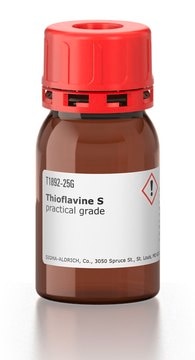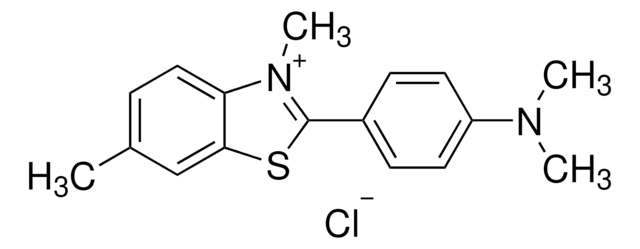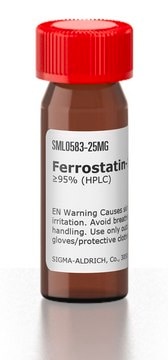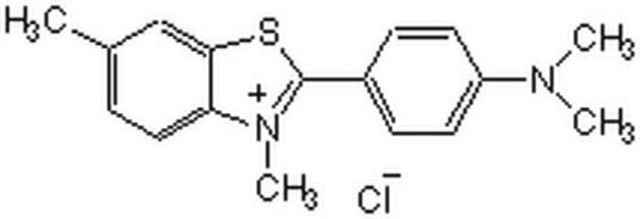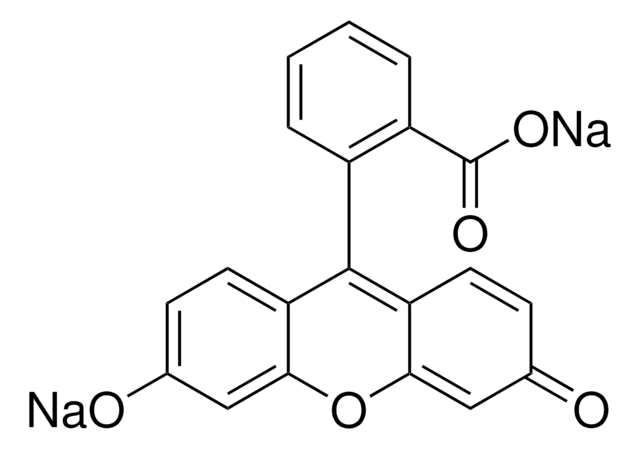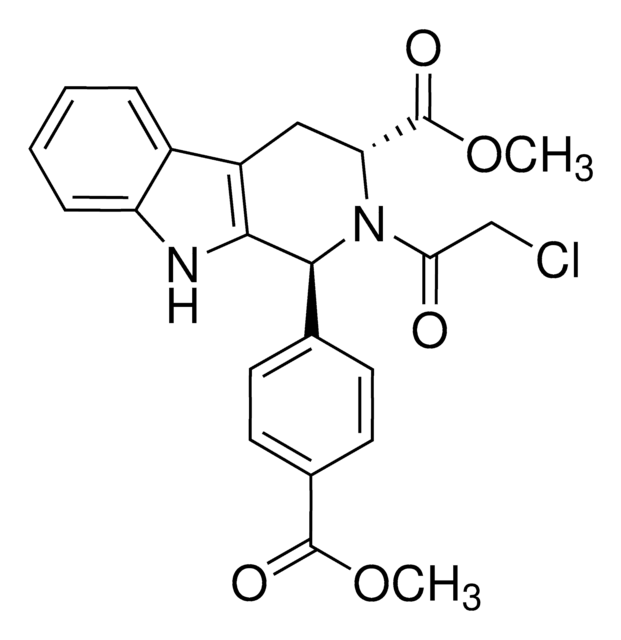SML1954
X-34
≥90% (HPLC)
Synonym(s):
1,4-Bis(3-carboxy-4-hydroxyphenylethenyl)benzene
Sign Into View Organizational & Contract Pricing
All Photos(1)
About This Item
Empirical Formula (Hill Notation):
C24H18O6
CAS Number:
Molecular Weight:
402.40
MDL number:
UNSPSC Code:
12352200
NACRES:
NA.77
Recommended Products
Quality Level
assay
≥90% (HPLC)
form
powder
color
white to beige
solubility
DMSO: 2.0 mg/mL, clear
storage temp.
2-8°C
SMILES string
OC(C=C1)=C(C(O)=O)C=C1C=CC2=CC=C(C=CC3=CC=C(O)C(C(O)=O)=C3)C=C2
Biochem/physiol Actions
Fluorescent, amyloid-specific dye
X-34 (1,4-bis(3-carboxy-4-hydroxyphenylethenyl)-benzene) is one among the small-molecule γ-secretase modulators (GSMs) involved in lowering Aβ42 levels (the 42-residue isoform of the amyloid-β peptide). X-34 has also been used to visualize intracellular immunoreactive deposits with classic amyloid fibrillar ultrastructure in living transgenic Caenorhabditis elegans animals. It is also used as a histochemical stain for determining pathological changes in Alzheimer′s disease (AD).
X-34 is a fluorescent, amyloid-specific dye. It binds at a different site than Pittsburgh Compound B and is a highly fluorescent marker for beta-sheet structures.
Storage Class
11 - Combustible Solids
wgk_germany
WGK 3
flash_point_f
Not applicable
flash_point_c
Not applicable
Certificates of Analysis (COA)
Search for Certificates of Analysis (COA) by entering the products Lot/Batch Number. Lot and Batch Numbers can be found on a product’s label following the words ‘Lot’ or ‘Batch’.
Already Own This Product?
Find documentation for the products that you have recently purchased in the Document Library.
S D Styren et al.
The journal of histochemistry and cytochemistry : official journal of the Histochemistry Society, 48(9), 1223-1232 (2000-08-19)
X-34, a lipophilic, highly fluorescent derivative of Congo red, was examined as a histochemical stain for pathological changes in Alzheimer's disease (AD). X-34 intensely stained neuritic and diffuse plaques, neurofibrillary tangles (NFTs), neuropil threads, and cerebrovascular amyloid. Comparison to standard
Visualization of fibrillar amyloid deposits in living, transgenic Caenorhabditis elegans animals using the sensitive amyloid dye, X-34
Link CD
Neurobiology of Aging, 22, 217-226 (2001)
Marcus Bäck et al.
Chemistry (Weinheim an der Bergstrasse, Germany), 22(51), 18335-18338 (2016-11-04)
Deposits comprised of amyloid-β (Aβ) are one of the pathological hallmarks of Alzheimer's disease (AD) and small hydrophobic ligands targeting these aggregated species are used clinically for the diagnosis of AD. Herein, we observed that anionic oligothiophenes efficiently displaced X-34
Substrate-targeting ?-secretase modulators
Kukar TL
Nature, 453, 925-929 (2008)
Heidi Olzscha et al.
Cell chemical biology, 24(1), 9-23 (2016-12-19)
Lysine acetylation is becoming increasingly recognized as a general biological principle in cellular homeostasis, and is subject to abnormal control in different human pathologies. Here, we describe a global effect on amyloid-like protein aggregation in human cells that results from
Our team of scientists has experience in all areas of research including Life Science, Material Science, Chemical Synthesis, Chromatography, Analytical and many others.
Contact Technical Service